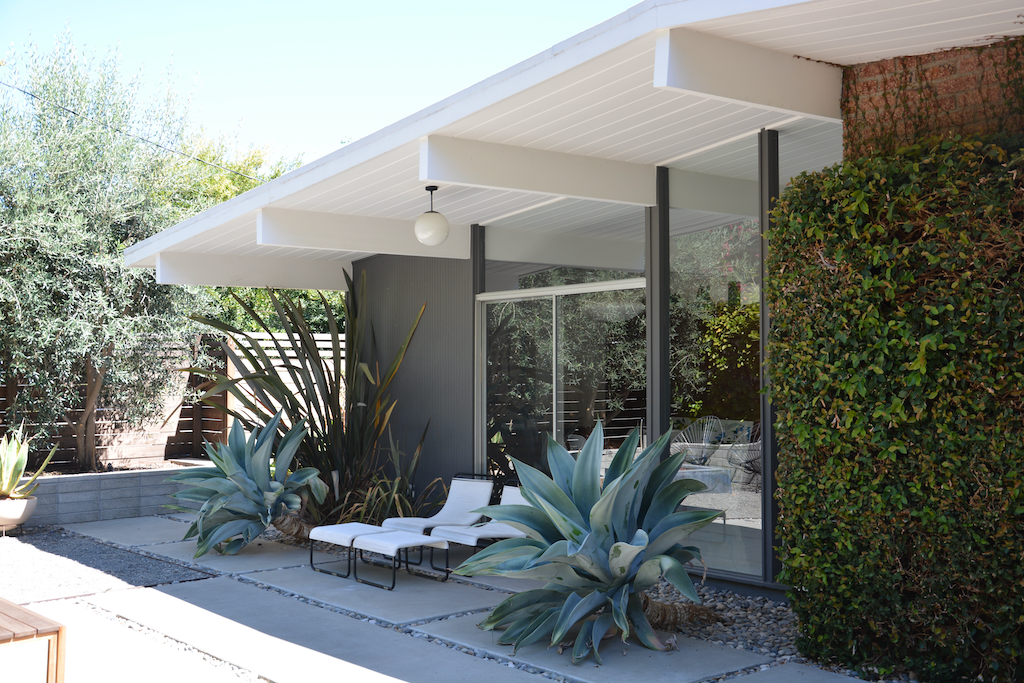
Well, hello. It appears that it’s been seven years (!) since we completely tore out our backyard and had fresh landscaping done. Now that everything has matured, I thought I’d share how things have settled in, what worked, and what didn’t.
A quick recap for those new here: The yard was completely cleared save for the creeping vine you see on the fireplace wall above. All the existing grass and flower beds were removed along with the concrete pads outside the bedroom and dining room. There were attempts at negotiation with neighbors (a new back fence was a non-starter), material selection, plus tweaking things here and there without disrupting construction. All the usual stuff. I stressed a lot (hello, 4:30am panic attacks), because the decisions we were making now would be ones we would live with for years.
I will say it was stressful, because the decisions we were making then would determine how things would look for years going forward.
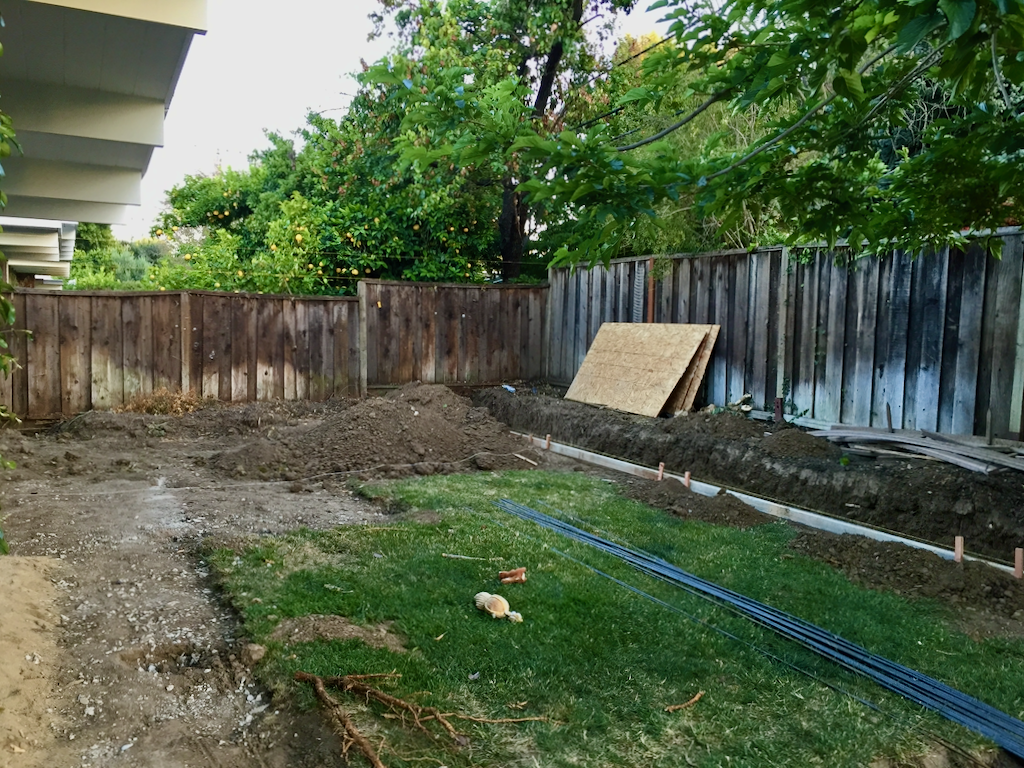
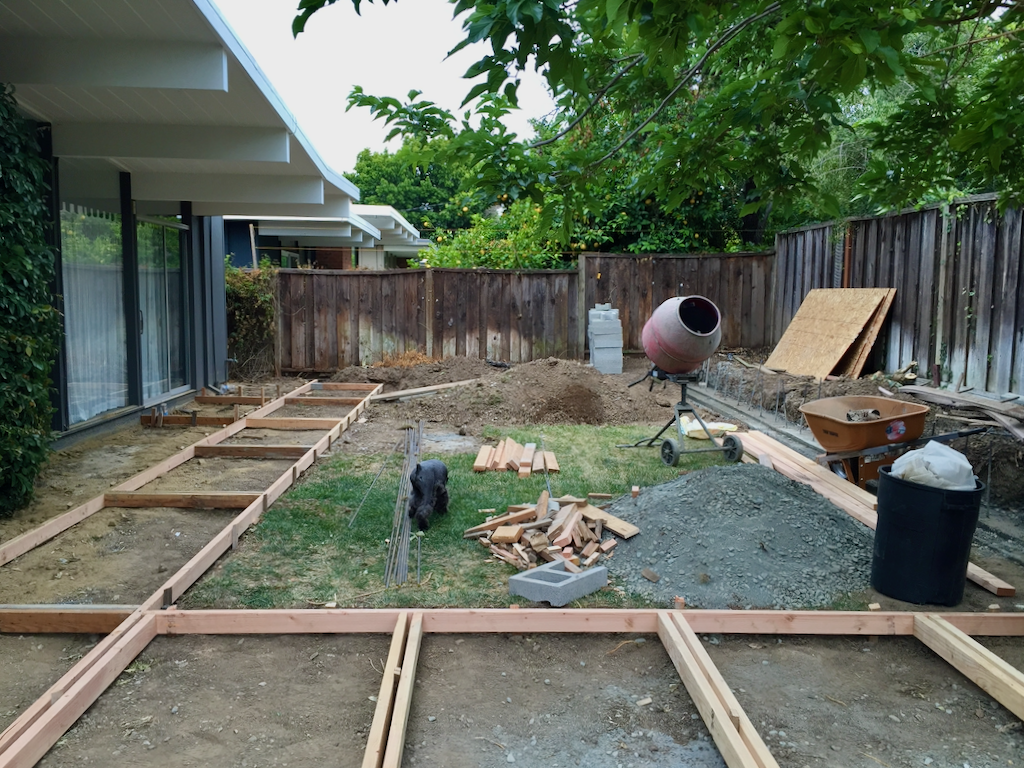
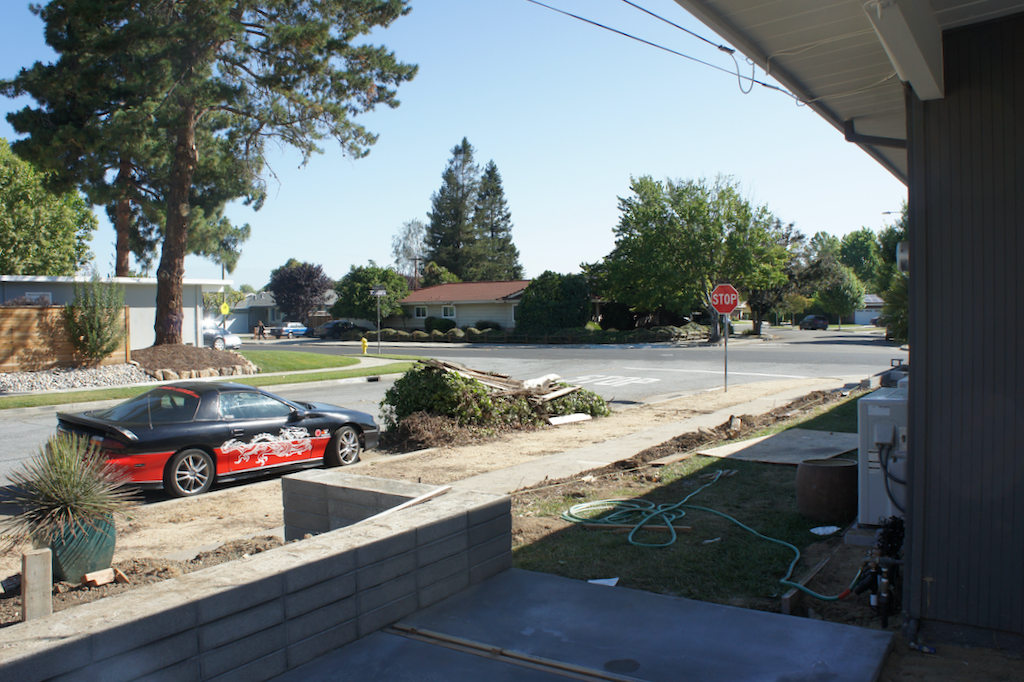
We did get to enjoy some sweet views of our contractor’s Dragon Car when the side fence came down!
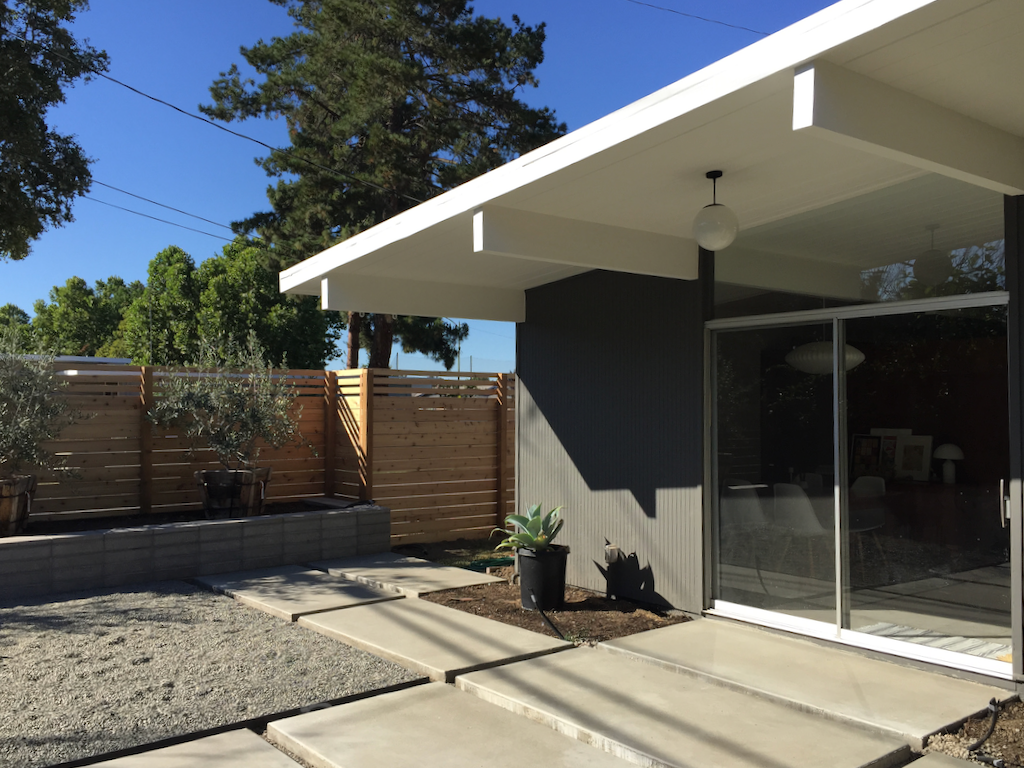
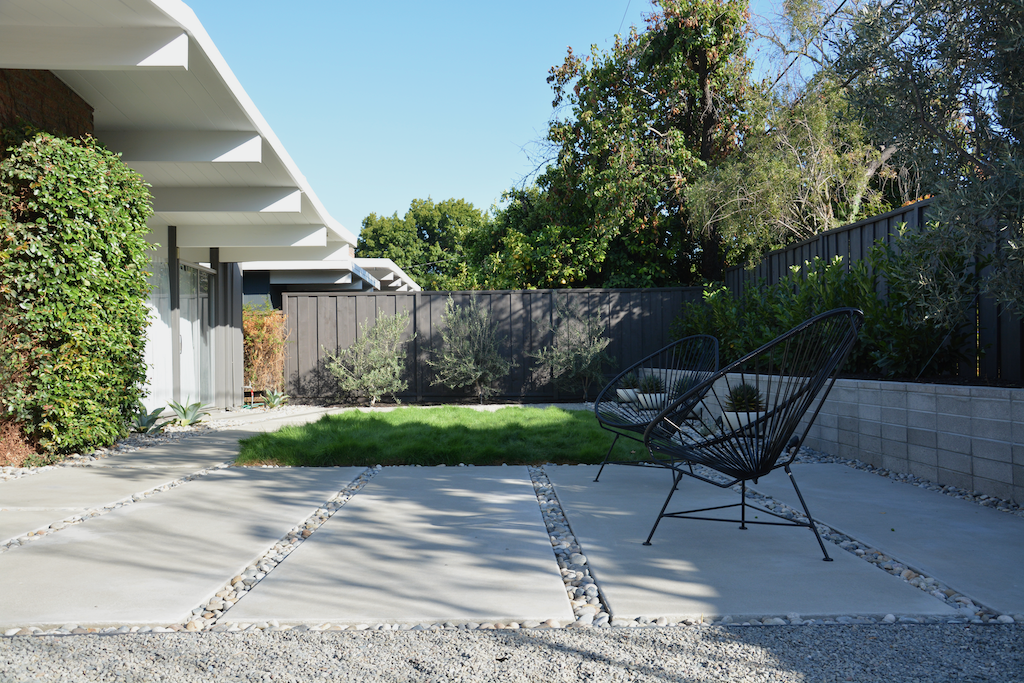
New hardscape installed, new plants, new furniture, new gas fire pit. The plants now look tiny to me. I remember having that ‘what have we done?’ feeling when our yard felt weirdly naked (though our days of living without a fence probably contributed to that). The promise of everything filling in to create a lush, cozy space helped keep us going through the ups and downs of the whole undertaking.
You can see more ‘after’ shots in my initial reveal posts about the backyard and the front too.
So how is our backyard now? It’s great. Mostly. Partly dead, but otherwise great.
The olive trees and giant agaves love it here. All the seating areas have worked out nicely too. We’ve switched around some of the furniture, to include more comfortable loungers near our bedroom and got a solid teak dining table and bench.
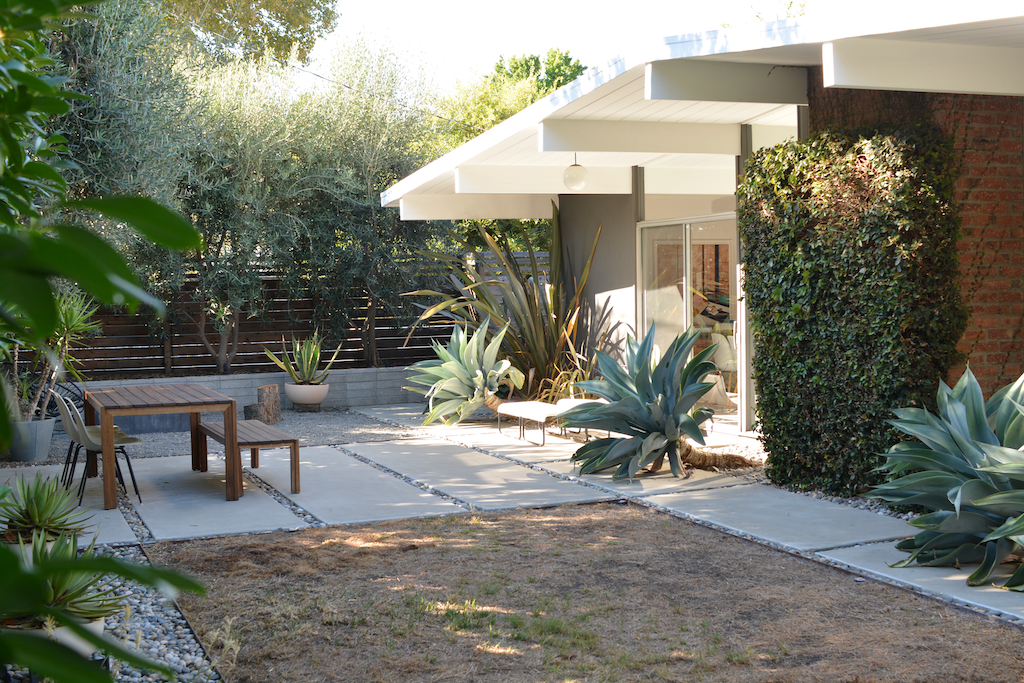
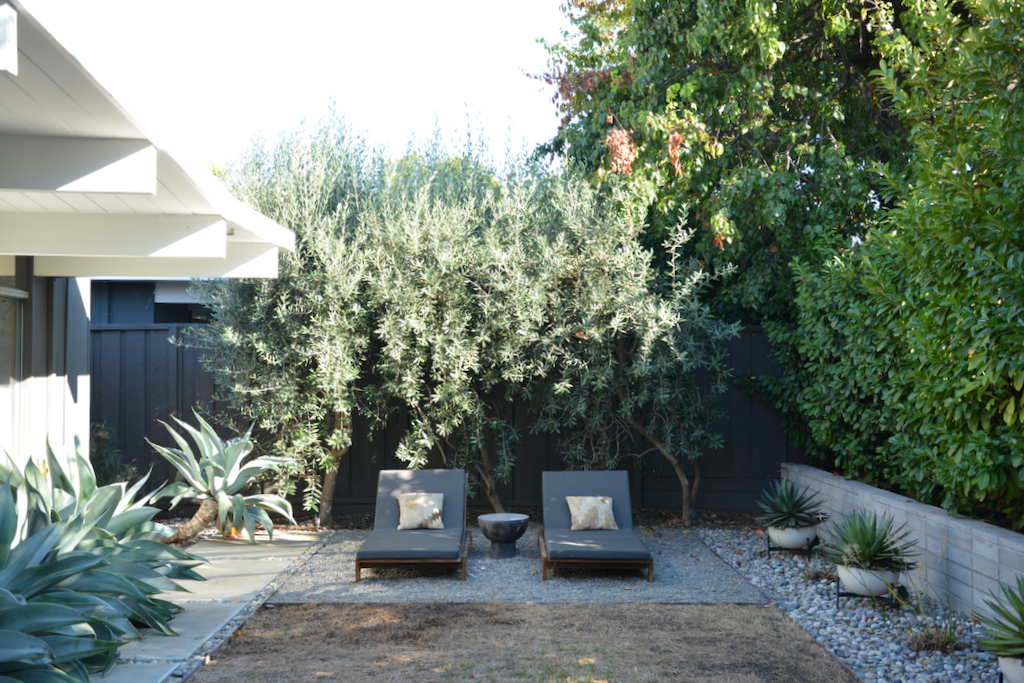
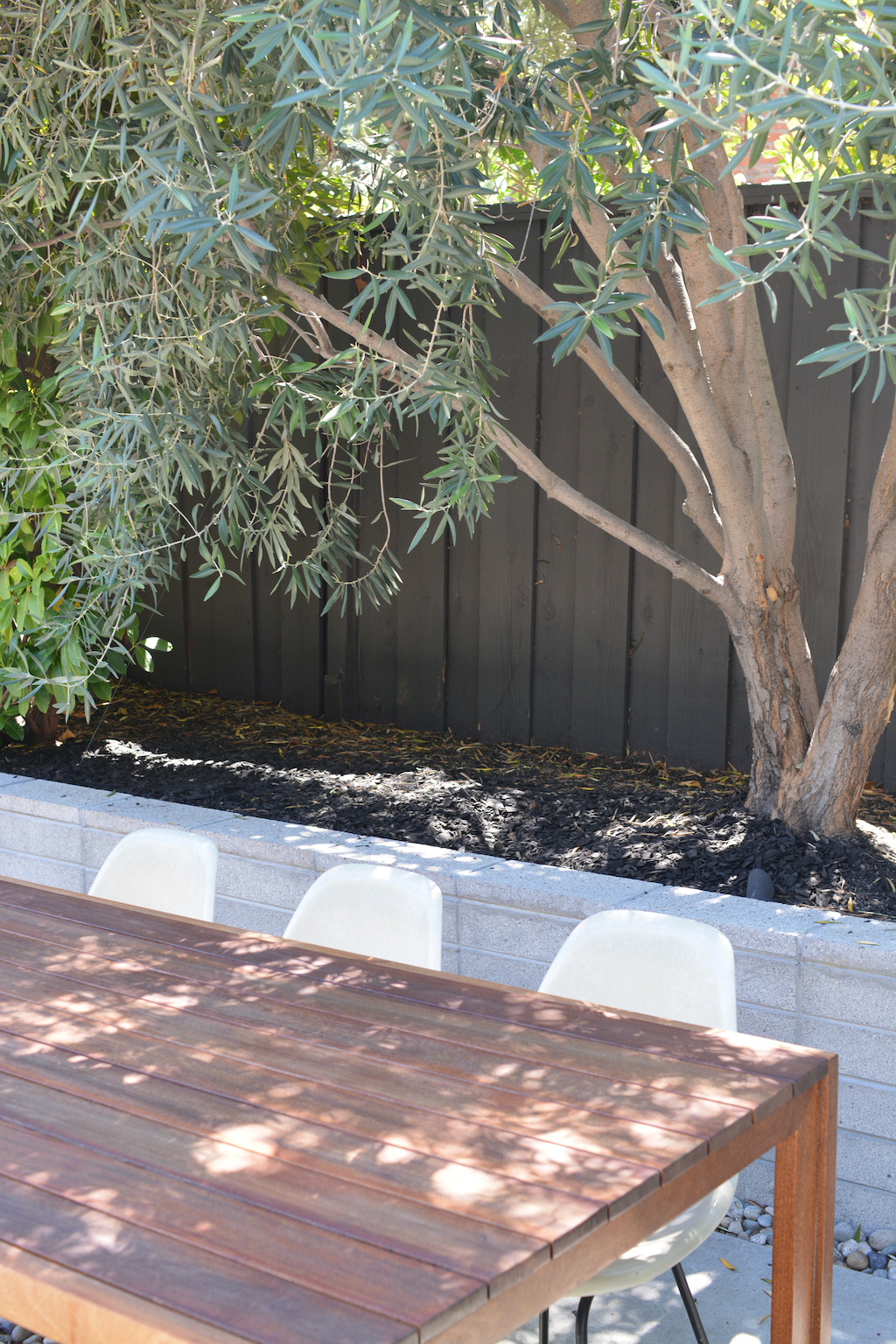
The caveats
As I expected, keeping all of the gravel and pebbles separated has been somewhat challenging. We’d have a bit of scattering thanks to Winston tearing around at first. Now, we have a toddler constantly working to move them elsewhere. And we’re frequently fighting the landscaping fabric which pops up from under the gravel.
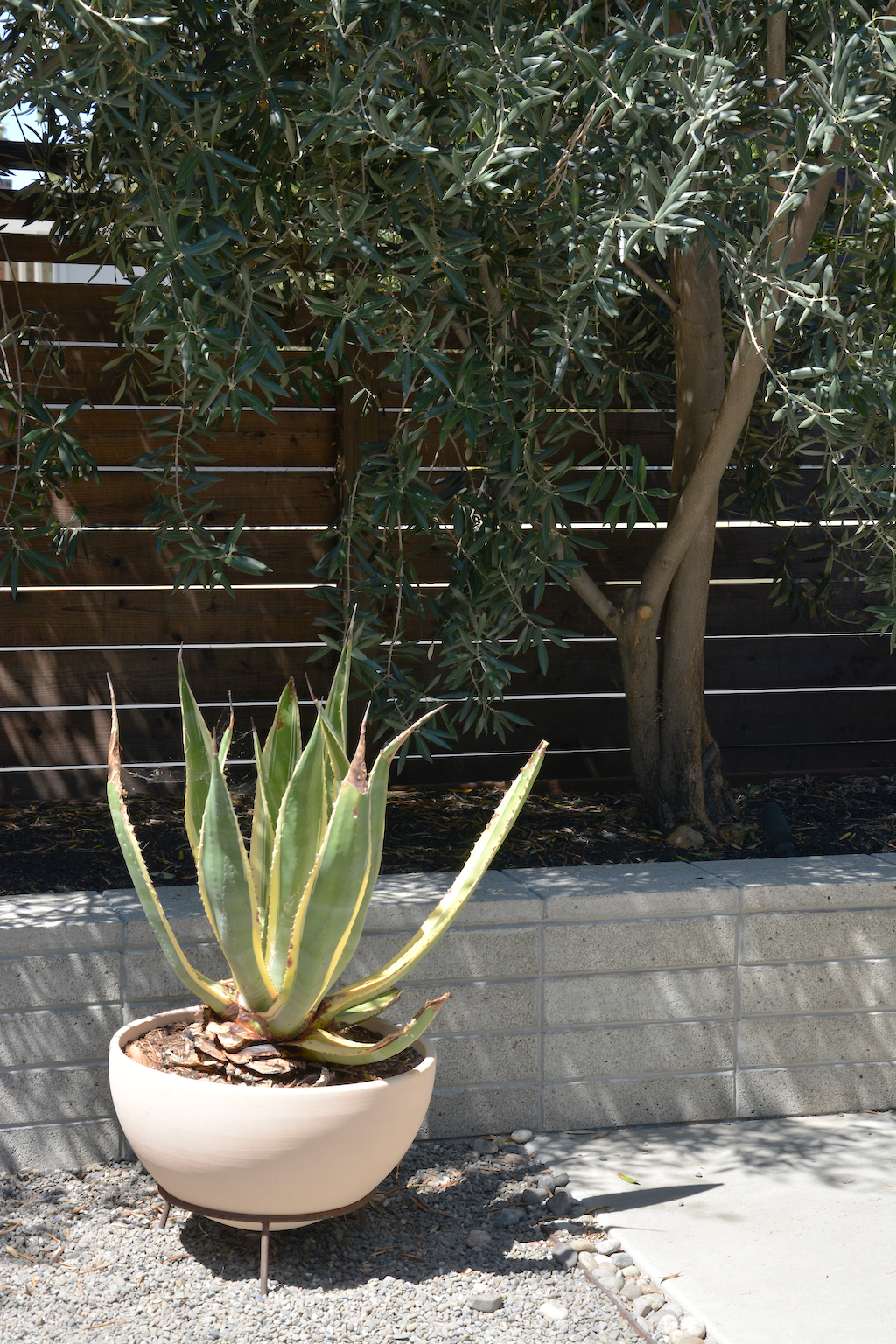
I still like the look (when I’ve taken the time to re-sort the stones) and it has a number of things going for it. It’s easy to clean with a leaf blower, plus any rain runs off the pavers easily so we don’t have green algae stains in the winter. Not a high priority to switch these up at this point.
More of a priority is the grass. The no-mow grass was installed as sod, and lasted really well for years. We loved it. It was cool and lush. The texture was beautiful. We’d only mow it in the spring, and trim the edges every now and then to keep it tidy.
Here’s how the grass looked last summer:
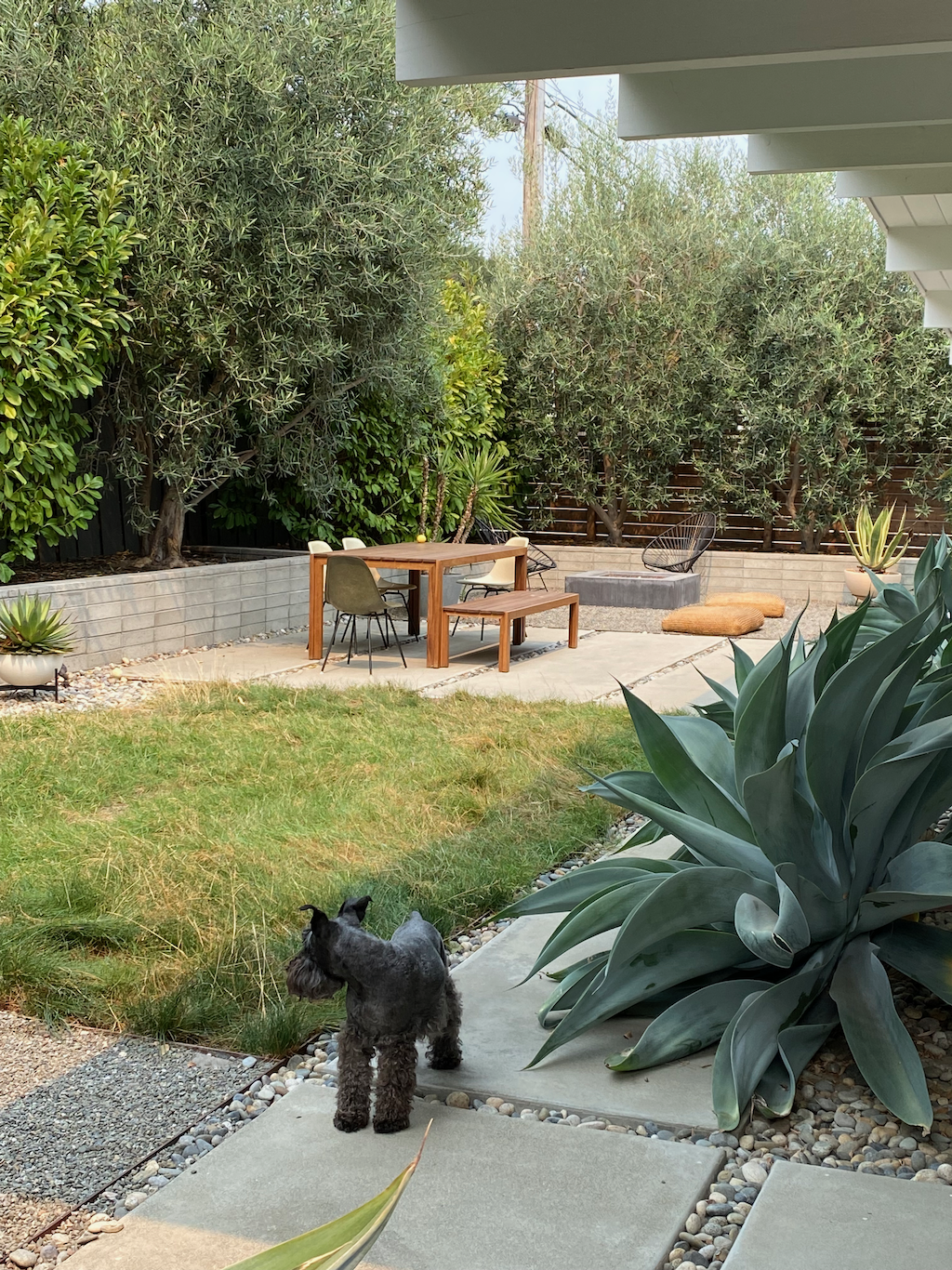
Then last winter, when I’m pretty sure we received only one day of solid rain, it started getting more brown and dry, eventually going dormant. And the grass never came back.
This summer I’ve been slowly de-thatching it by hand. There are some living bits here and there, but it is mostly dead.
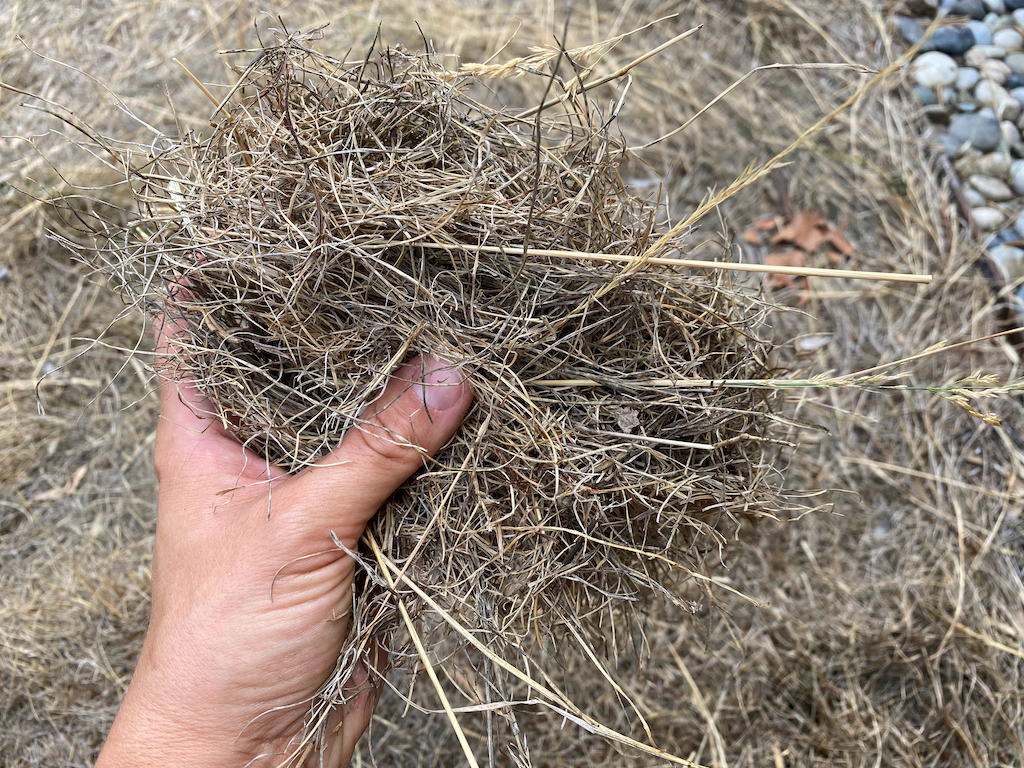

My cheap but work-intensive solution will be to attempt to re-seed this patch with one of the components of the no-mow mix: Molate Fescue. If that goes well, I think we will have to de-thatch it more regularly to keep it from smothering itself once established. Any grass experts out there, let me know if you have any tips in the comments.

Lastly, though it is minor, I’ll mention that the ‘Blue Glow’ agaves in their cute planters don’t last forever. They eventually get too big and root-bound in there. I’ve had to replace them once so far, with another replacement probably coming soon.
Good things
On to the stuff we love! First up, the concrete poured-in-place pavers. These have held up remarkably well and don’t show much age at all. The velvety ‘sand finish’ texture is still really nice to walk on after all of these years. I’m also happy with how they were located– the grid lines up with the posts of the house so they totally flow with the existing architecture.
The cinder block wall is a favorite element. It helped us get instant height for the hedge, and near the fire pit it provides additional seating.
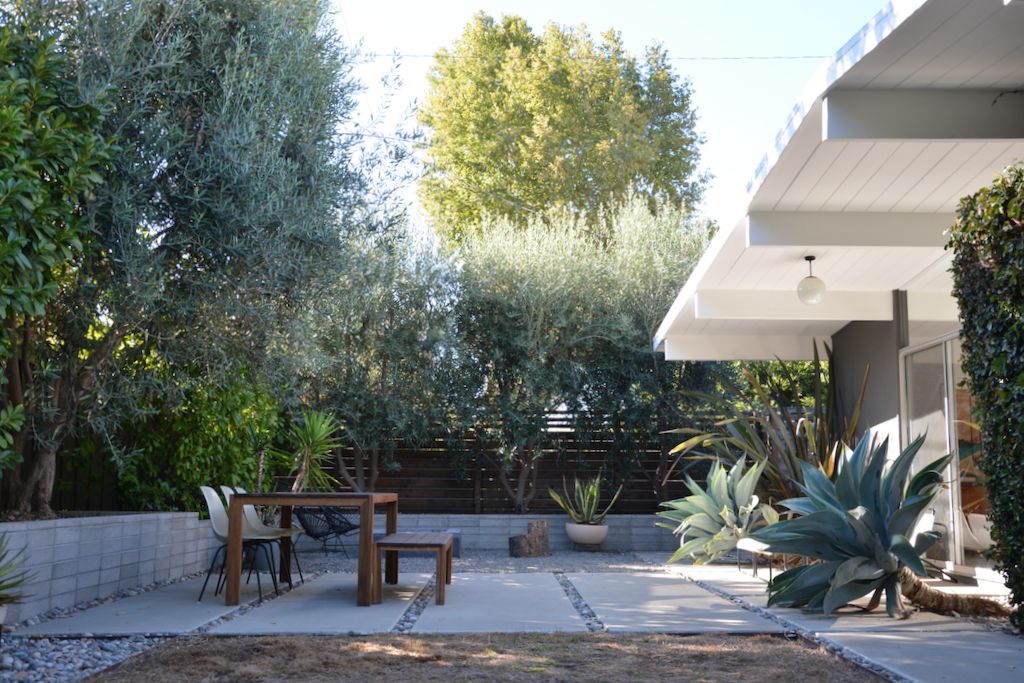
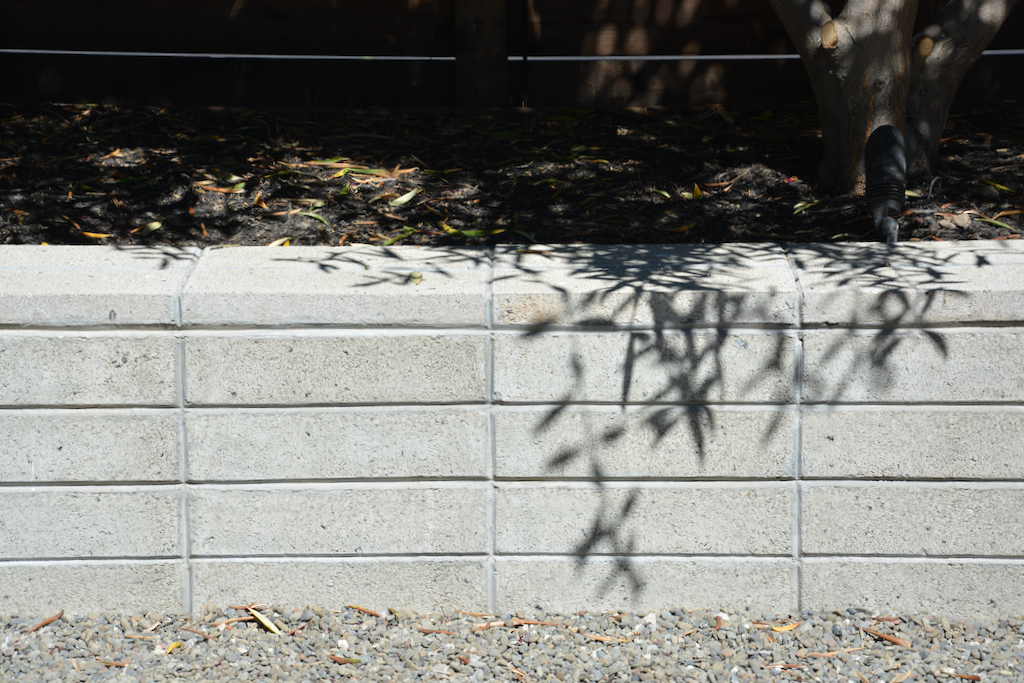
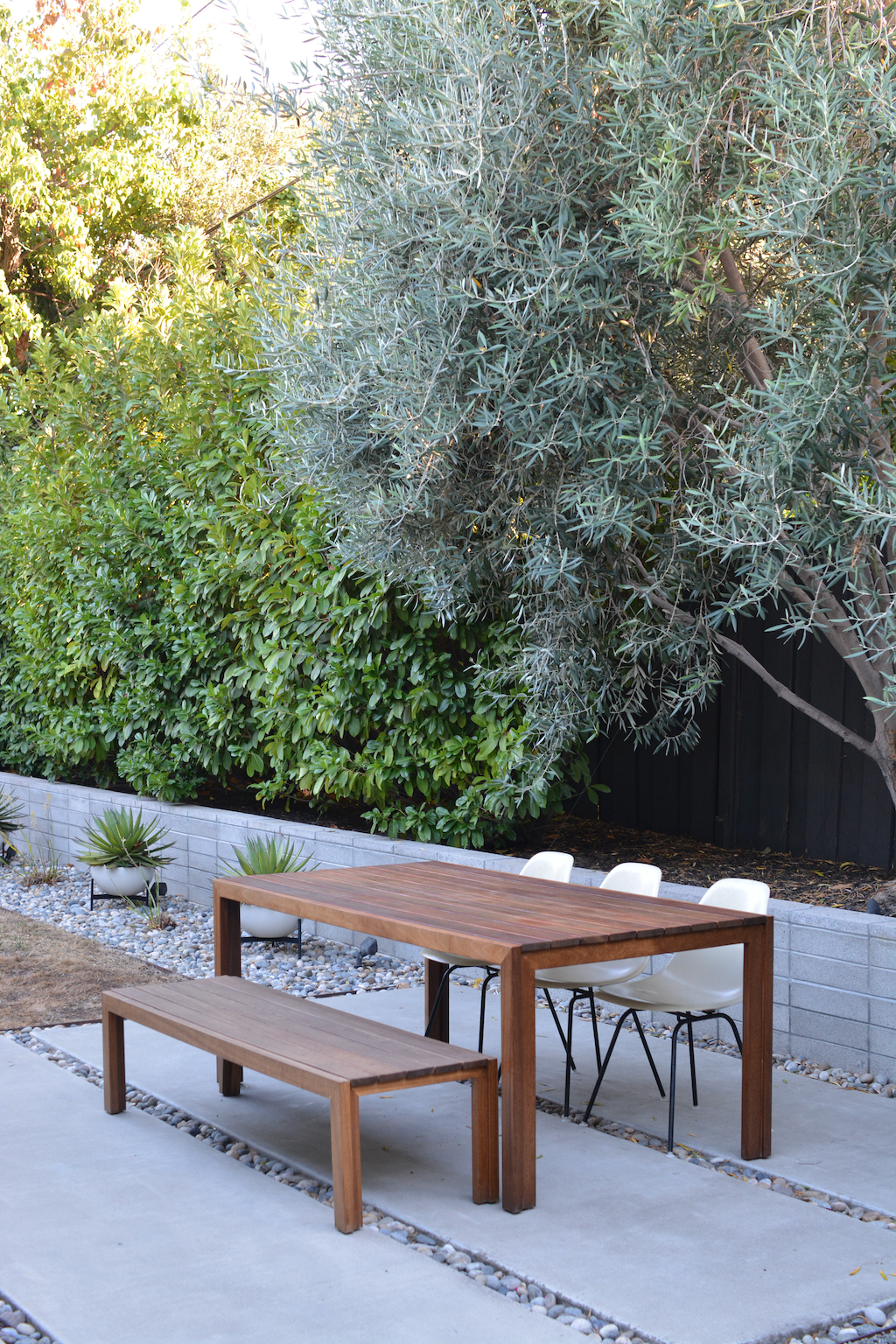
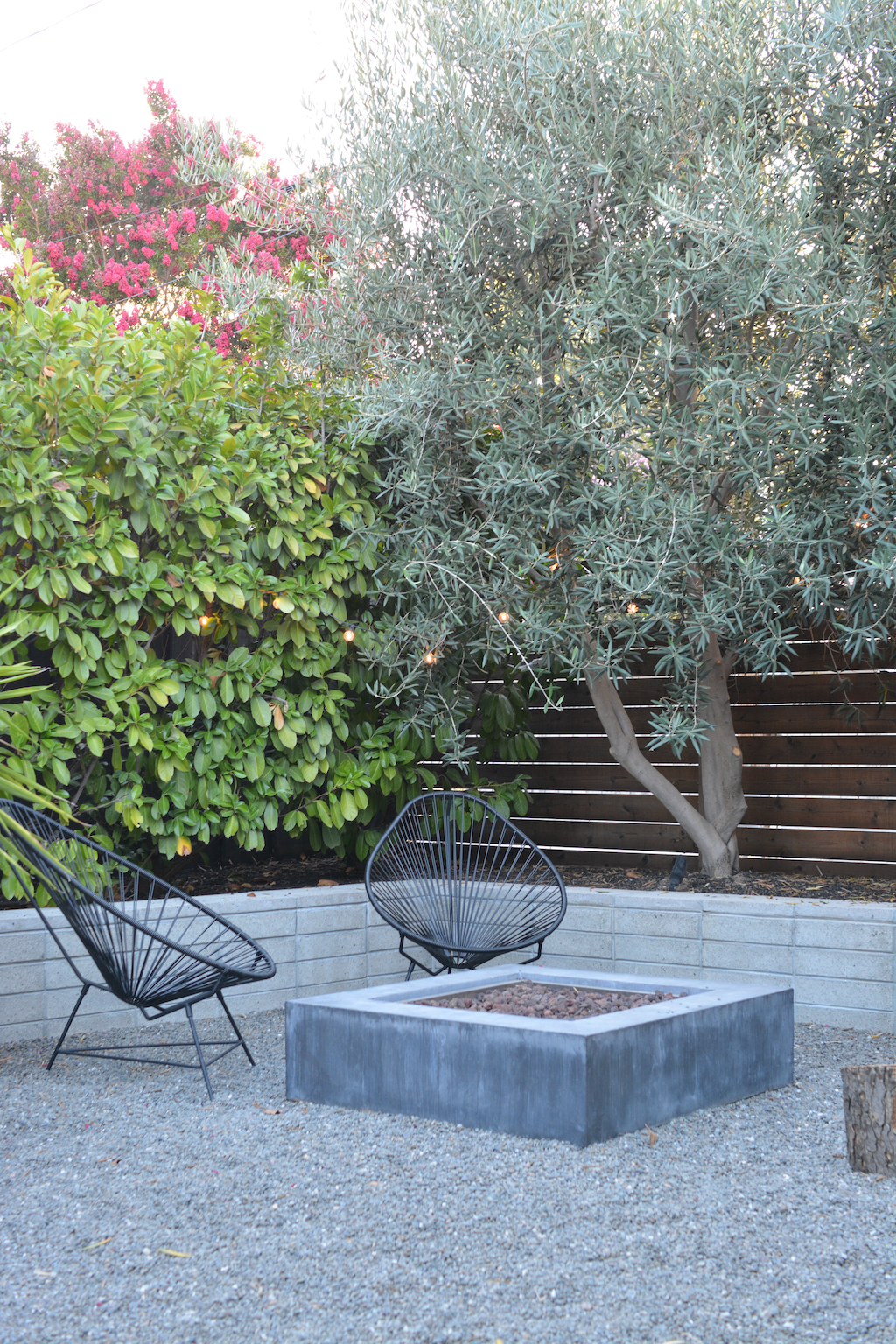
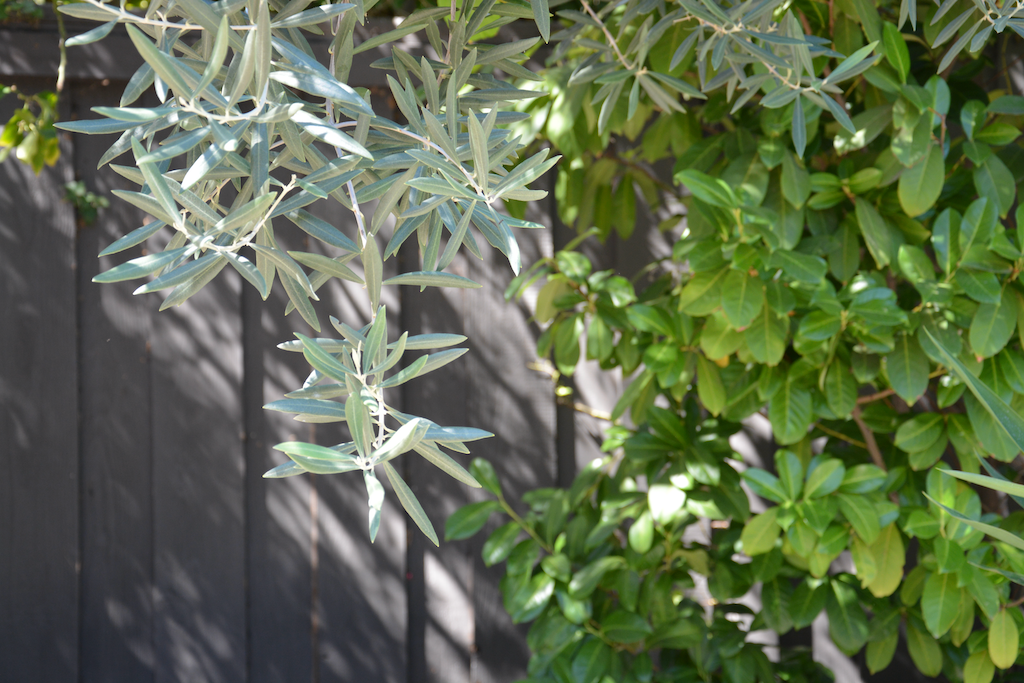
The trees have all grown tall and create much-needed shade in the late afternoons. True to their name, the fruitless olives really don’t produce much fruit to speak of. They flower in the spring with delicate white blossoms, and the fruit are just puny little balls.
Along with the trees, the hedge has filled in amazingly well. It does best in full sun where it has grown the tallest.
After 5 years of growth, we’ve achieved this wall of green:
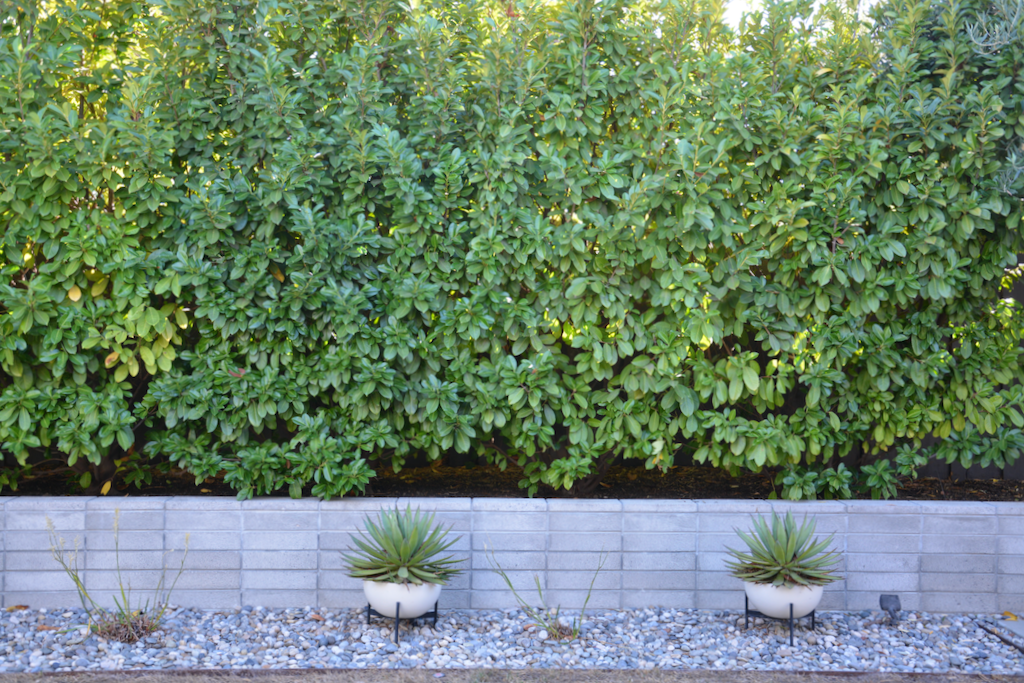
The added bonus has been the secret tunnel that now runs along the fence, perfect for Winston and our kid to roam in.
The ‘Foxtail’ agaves are now enormous. I would plant them again, as they’ve been a nice, safe agave to have around kids and pets. The leaves are succulent and soft. There are no needles at the ends, unlike other hardier agaves. They are prone to frost, so this particular spot against the windows has been ideal. (We had a few planted in the front where they nearly died the first winter.)
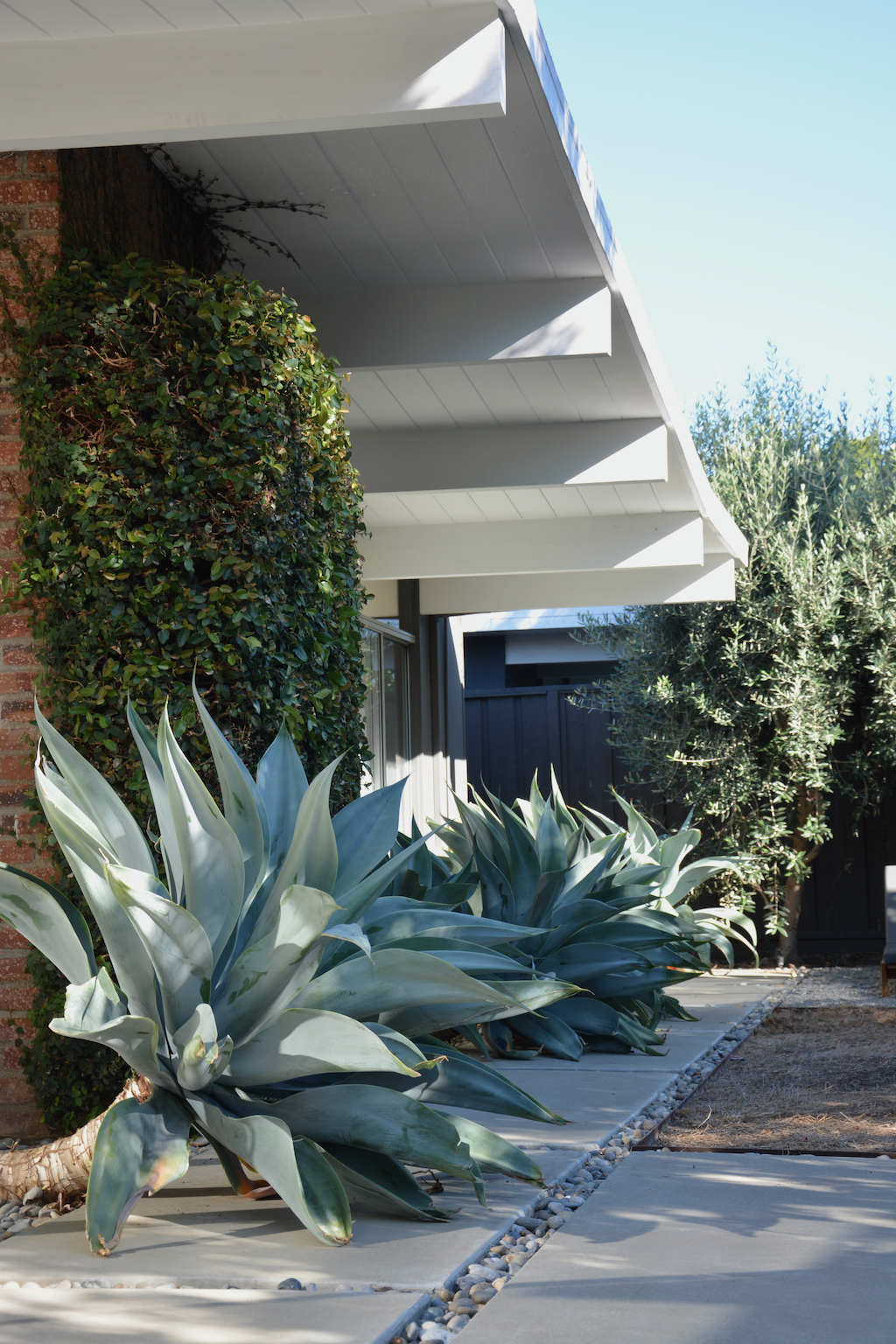
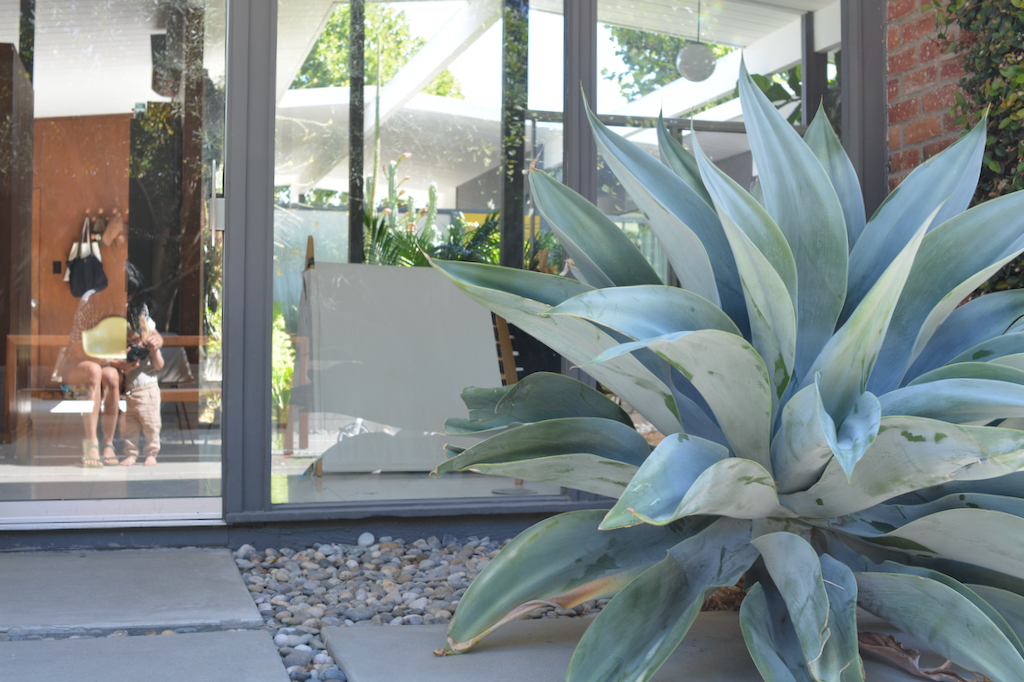
Sadly, we will have to remove them soon. I absolutely love them. They have made the concrete walkway along the back impassable, and probably contributed to the demise of the grass since we would walk over it to avoid the agaves. Not sure what a good solution is to keep them, so if you’re knowledgeable please let me know! If we remove them, we will try to send them to a new home with more space.
Additions
As far as the original design, we’ve changed very little of what was installed. I’ve made a few additions to cozy the space up, like adding a few planters in our fire pit area along with a giant New Zealand flax at the corner of the house.
I recently removed out the jasmine vines which lined the fence we share with our neighbors and added several grevillea ‘Moonlight’ plants in their place.
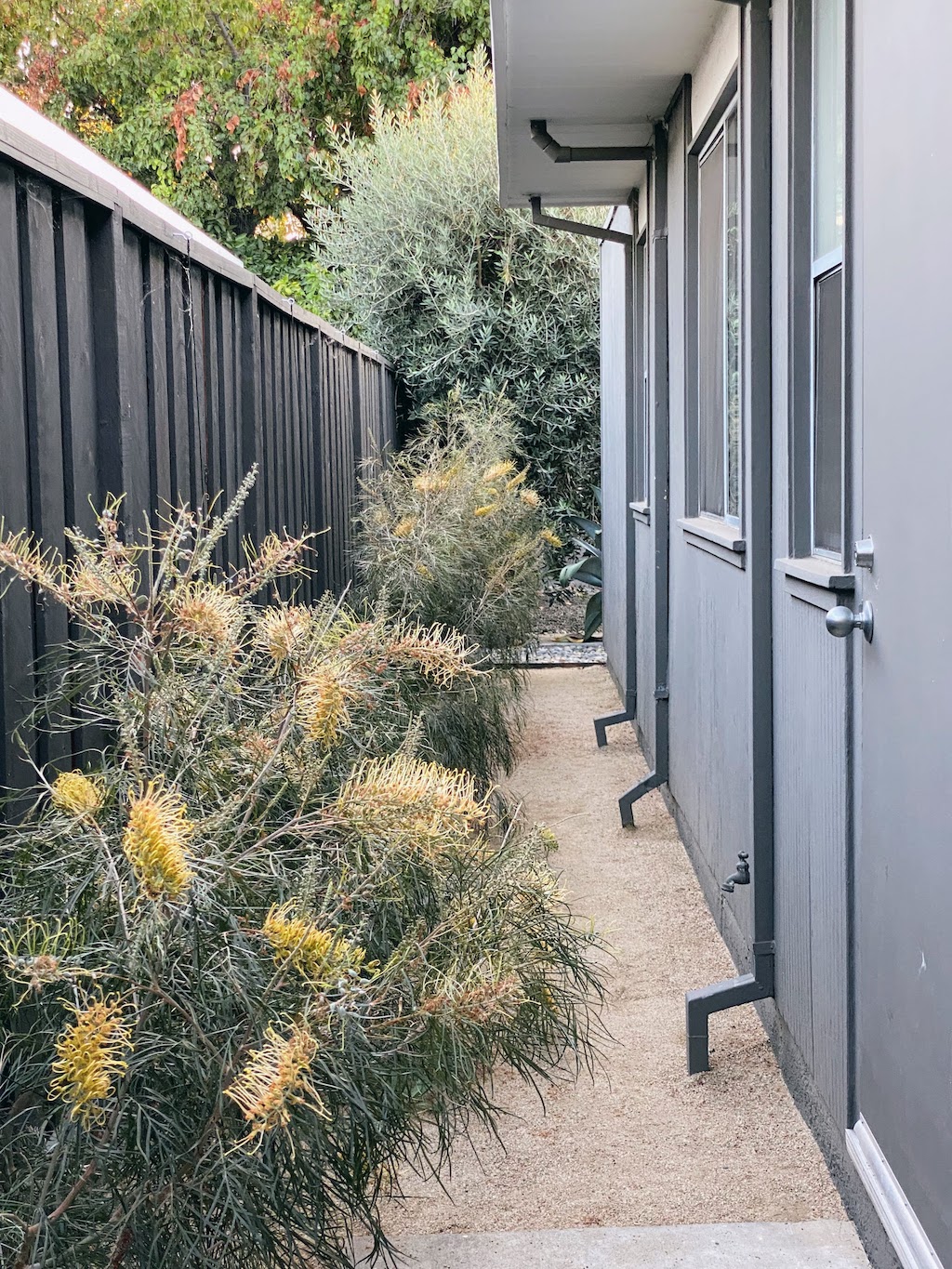

These require very little water and are booming since being planted just a year ago. This year, we can see bees and hummingbirds visiting them often. I’m also considering replacing some of our front yard plants with a low, creeping grevillea but that’s a topic for another post.
I hope you’ve enjoyed this exhaustive (and possibly exhausting?) after-the-after post, so you can see how this design has worked out. We still count this as the one of the most stressful but ultimately high payoff projects we’ve ever done. We love it.
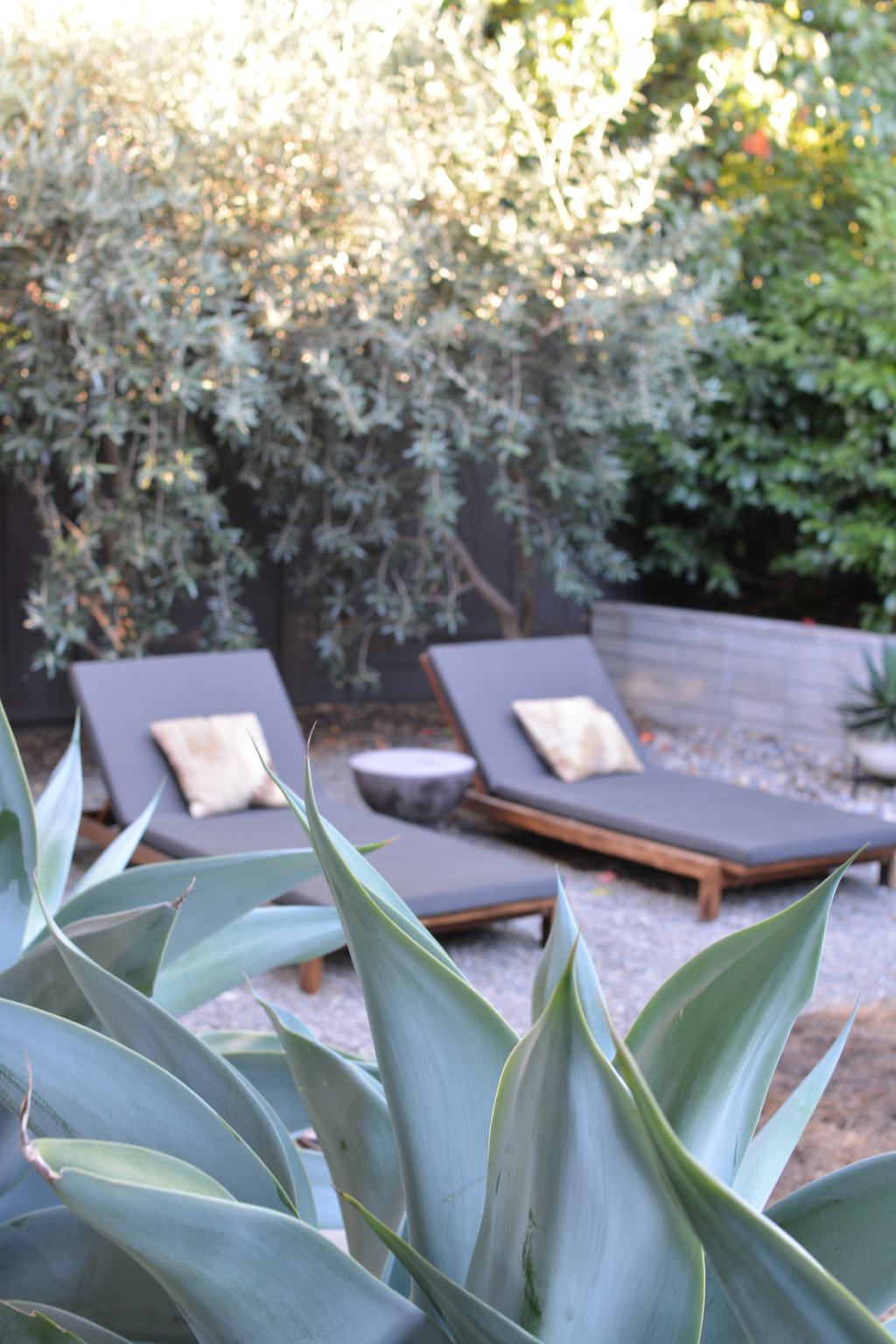
Much gratitude to Boxleaf Design and Gonzalez Landscaping for their incredible work on this project.
Questions? Let me know in the comments and I’ll address them there, as well as updating my list of resources below. It’s nice to be back in this space, however dusty. Cheers!
Resource recap:
- Trees: ‘Swan Hill’ fruitless olives
- Huge agaves: Agave attenuata
- Potted agaves: Agave ‘Blue Glow’
- White planters: Modernica
- Grass: ‘Native Mow Free’ mix from Delta Bluegrass
- Hedge: Prunus laurocerasus
- Concrete blocks: 4″ x 6″ x 16″ CMU
- Rocks: ‘Lin Creek’ pebbles
- Gravel: pea gravel
- Concrete pavers: poured in place, ‘sand’ finish
- Fence stain: Cabot Stains Solid Stain in ‘Burnt Hickory’
- Acapulco chairs from Innit
- Vintage Eames fiberglass dining chairs
- All other furniture: Modernica
This is not a sponsored post.

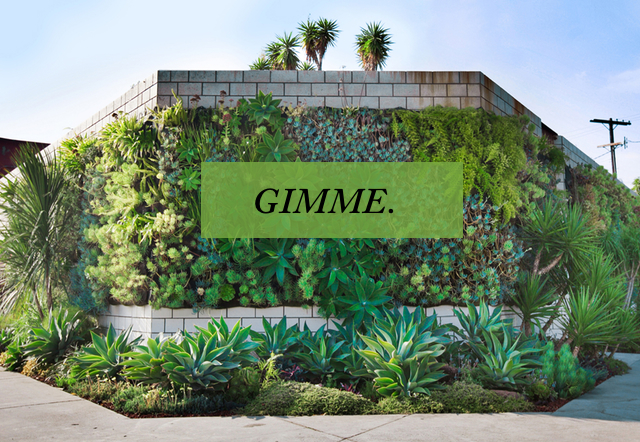
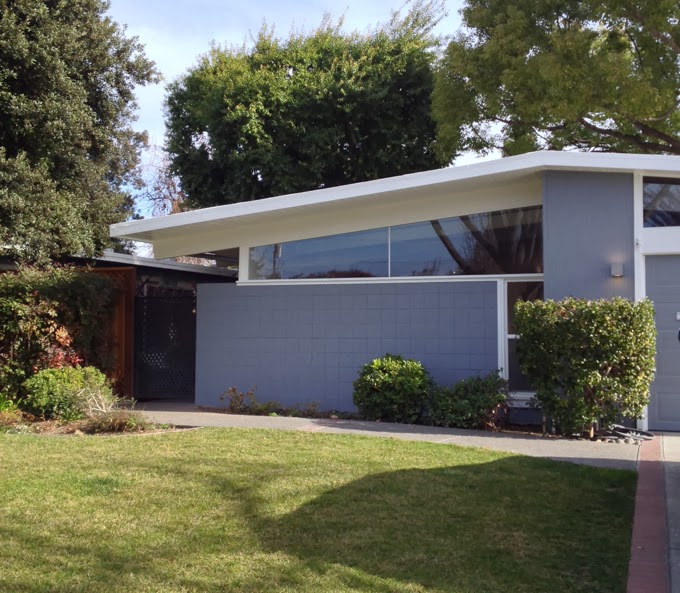
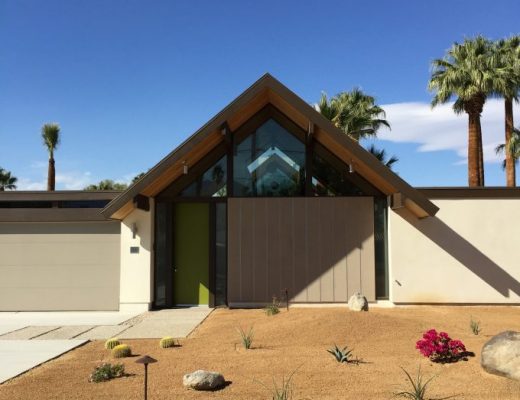
2 Comments
Hi Karolina,
I love your beautiful Eichler and peaceful back yard!
We recently removed a few trees in our back yard and I’m also considering replacing them with fruitless Olive trees around our fence line for shade and privacy. How close did you plant these to your fence and also recommended spacing apart? Does this variety drop a lot of leaves?
Thank you!
Hi Stephan,
Thank you so much! The olives are about 1.5′ away from the fence for the smallest ones (in the area with the two loungers), and 4′ apart. This is the tightest spacing that was used. The leaf drop is fairly consistent throughout the year on these. I’d say they drop a bit more when it’s dry and hot, but never a huge amount.
Hope that helps!